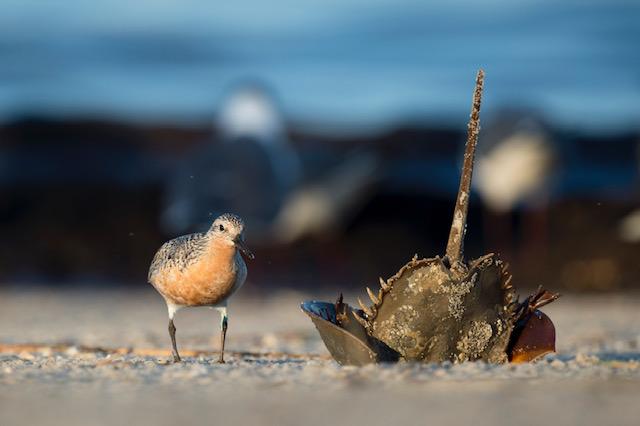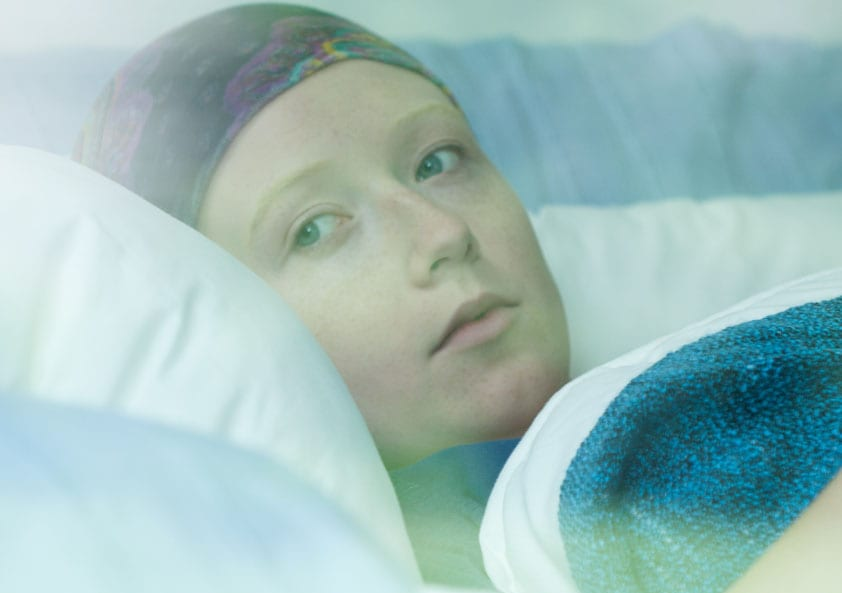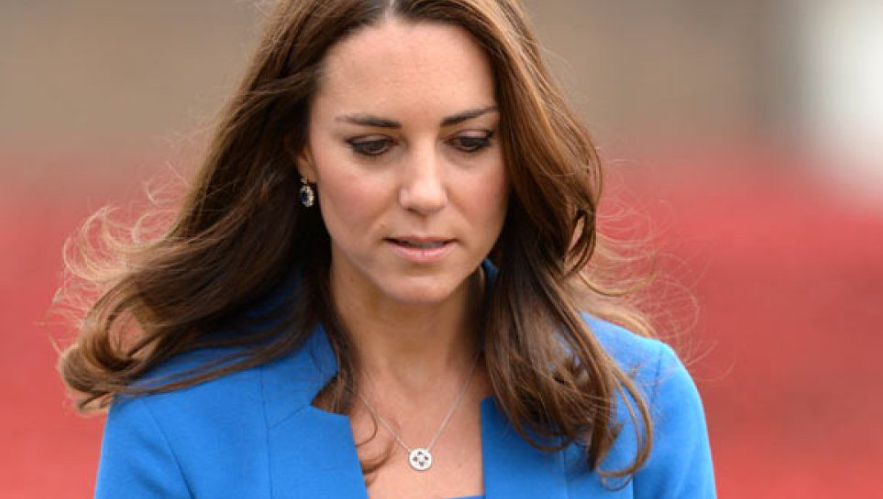Every spring, 500,000 Atlantic Horseshoe Crabs are collected by four biopharmaceutical companies as they crawl to the mid-Atlantic beaches to lay their eggs. The helmet-shaped arthropods are placed upside down on a rack, and a sterile needle is inserted near the heart to collect about 30 percent of their blood.1 2 The crabs are returned to the ocean and their blood, often referred to as “blue gold” due to it’s color and worth of $60,000 per gallon in a global industry valued at $50 million per year, is used to purify vaccines, injectable drugs and other sterile pharmaceuticals.3 4
Unique Horseshoe Crab Blood Reacts to Endotoxins
Commonly referred to as a “living fossil,” horseshoe crabs have an open circulatory system with no adaptive immune response. Instead, they have survived unchanged for an estimated 200 million years through an innate immunity based on granular amebocytes in their blood.5 These amebocytes contain the proteins of its blood clotting system, which are released when they come in contact with unwanted organisms like Gram negative bacteria.6 Endotoxin is a lipopolysaccharide found on the outer membrane of Gram-negative bacteria (such as E. coli, Salmonella, Shigella, Neisseria, Haemophilus influenza, and Bordatella pertussis)7, and when it contaminates vaccines and other injectable pharmaceutical products it can cause fever, shock, organ failure and death.8 The coagulation proteins extracted from horseshoe crab blood, called lysates, produce an instantaneous, visible reaction to endotoxins, which has driven commercial demand from pharmaceutical and biomedical companies to confirm drug and medical device safety.9
Even an iota of endotoxin can prove to be fatal.10 John Dubczak, General Manager at Charles River Laboratories, which manufactures and globally distributes lysate products, reports, “Detection is down to one part per trillion, but we can take it down to a tenth of a trillion, and further orders of magnitude more sensitive.”11
Synthetic Alternative Not Available
From the 1940s to the 1970s, rabbits were used to screen pharmaceutical products for endotoxins. In 1956 medical researchers Fred Bang and Jack Levin observed that horseshoe crab blood clotted and formed a solid mass in the presence of endotoxin, leading to the development of an endotoxin assay known as the Limulus amebocyte lysate (LAL) assay, which was approved for use by the FDA in 1977.12 13 In Asia, there is a similar test called TAL (Tachypleus amebocyte lysate) which takes its name from an Asian species of crab, Tachypleus tridentatus.
In response to concerns about dwindling populations of horseshoe crabs, the time required to catch and harvest blood from crabs, and variability that occurs with pooled batches of harvested animals, new endotoxin tests using synthetically produced recombinant Factor C (rFC) were developed to relieve pressures of a growing demand for the LAL assay.14 Although this synthetic rFC alternative was approved for use in Europe in 2016, the American Pharmacopeia, which sets the scientific standards for drugs and other products in the U.S., on June 1, 2020 declined to place rFC on equal footing with crab lysate, claiming that its safety is still unproven.15
Horseshoe Crabs An Endangered Species
Horseshoe Crabs can take ten to twelve years to reach maturity, and only three out of 100,000 survive their first year of life. Once they reach adulthood, the crabs have few non-human predators and are expected to live ten or more additional years. It is only once they reach maturity that they begin their spring migration from the shelter of deeper waters to their spawning beaches. In the U.S., mortality of horseshoe crabs due to LAL production is estimated to be relatively low—8 to 15 percent. However, in Asia, mortality is 100 percent because after bleeding, the crabs are sold to secondary markets for food and chitin production.16
As a result of overharvesting for use as food, bait and biomedical testing, and because of habitat loss, the American horseshoe crab is listed as Vulnerable to extinction and the Asian tri-spine horseshoe crab is classified as Endangered on the International Union for the Conservation of Nature (IUCN) Red List of Threatened Species. The two additional Asian horseshoe crab species will soon be listed on the IUCN Red List.17
In 1990 biologists estimated 1.24 million American horseshoe crabs spawned in Delaware Bay, a main egg-laying spot and prime collection point for companies. By 2002 that number had dropped to 333,500, and have remained at that level.18 Throughout the 1980s and 1990s biomedical harvesting seemed sustainable, and the pharmaceutical industry claimed that only three percent of the crabs they bled died. However, by the 2000s, annual horseshoe crab counts during spawning season revealed smaller numbers and a 2010 study found that as many as 30 percent of the bled crabs ultimately died—ten times as many as first estimated.19
The depletion of horseshoe crabs can become a weak link in the food chain that reverberates with potentially disastrous consequences for species that rely on horseshoe crab eggs as vital food sources, such as diamondback terrapins, striped bass and flounder, and many migratory birds.
Global Demand for Vaccines and Medical Devices Rising
Demand for lysate assays to test biomedical devices and vaccines is likely to rise significantly in the next two decades due to population growth and aging, and medical advancements to improve or prolong life. Any product or device that comes in contact with blood, lymph, spinal fluids or mucus membranes that do not pass through the body by an oral pathway must be tested for the presence of endotoxins.
Although vaccines are a small segment of the global pharmaceutical market, they represent the fastest growing segment of this industry and are heavily reliant upon endotoxin detection.20 This growth of consumer demand places pressure on the diminishing horseshoe crab resource needed for endotoxin detection.
“All pharmaceutical companies around the world rely on these crabs. When you think about it, your mind is boggled by the reliance that we have on this primitive creature,” says Barbara Brummer, state director for The Nature Conservancy in New Jersey.21
References:
1 Ecological Research & Development Group The Horseshoe Crab: Best Manufacturing Practices. The Horseshoe Crab.
2 Monks K. Why this crab’s blood could save your life CNN Health Jan. 5 2015.
3 Arnold C. Horseshoe crab blood is key to making a COVID-19 vaccine—but the ecosystem may suffer. National Geographic July 2, 2020.
4 See Footnote 2.
5 Krisfalusi-Gannon J, Ali W, et al. The Role of Horseshoe Crabs in the Biomedical Industry and Recent Trends Impacting Species Sustainability Frontiers in Marine Science June 5 2018.
6 Ecological Research & Development Group The Horseshoe Crab and Public Health. The Horseshoe Crab.
7 Todar K. Bacterial Endotoxin Todar’s Online Textbook of Bacteriology.
8 Ecological Research & Development Group What is Endotoxin? The Horseshoe Crab.
9 See Footnote 5.
10 Sharma S, Horseshoe crab blood could help make Covid-19 vaccine, but harm the ecosystem Hindustan Times July 7, 2020.
11 See Footnote 2.
12 Mehmood Y, What is Limulus Amebocyte Lysate (LAL) and Its Applicability in Endotoxin Quantification of Pharma Products. www.interchopen.com Jan. 8, 2019.
13 Ecological Research & Development Group Endotoxin Timeline. The Horseshoe Crab.
14 Cleanroom Technology, Recombinant Factor C assay to aid demand for LAL endotoxin testing. Mar. 9, 2020.
15 See Footnote 3.
16 Gauvry, G. Chapter 27: Current Horseshoe Crab Harvesting Practices Cannot Support Global Demand for TAL/LAL: The Pharmaceutical and Medical Device Industries’ Role in the Sustainability of Horseshoe Crabs from Changing Global Perspectives on Horseshoe Crab Biology, Conservation and Management (Springer International Publishing, Switzerland) 2015.
17 Botton M, Shin P. International Horseshoe Crab Day: a celebration of the flagship species for coastal habitat conservation. International Union for Conservation of Nature June 19, 2020.
18 See Footnote 3.
19 Ibid.
20 See Footnote 16.
21 See Footnote 3.














11 Responses
Vaccine Purity BAWAHHHHAAAAAHAAAAA, that is the biggest oxymoron going there is nothing PURE about that garbage.
My thoughts exactly…
Maverick, Ditto!!!
Where do these guys get the idea they have ‘rights’ to the blood of a horseshoe crab?
how abhorrent, terrible, disgusting, It makes me viscerally angry, poor crabs!!!!
Yes, @maverick, it IS an oxymoron. Notice how many people are allergic to shellfish these days? I live near the beach and this is a travesty.
That;s great that an endotoxin” detection system is being used by pharmaceutical companies, but what about the other toxins in vaccines such as methyl mercury, aluminum lake, formaldehyde, preservatives, foreign DNA and RNA, human aborted fetal tissue ( diploid cells), etc., etc…????
The reference to 200 million years shows how evolutionary thinking AGAINST God has gotten us to this point in our history! Evolution is a fairy tale for grown ups! Please check out http://www.evolutionvsgod.com
Or
http://www.atheistmovie.com
The facts and data DO NOT support evolution!
What next??
This Big Pharma Industry cares little for anything except their daily Worship at the Altar of the Almighty Dollar.
Yes, given the population in the World we MUST do all that we can to preserve the unique forms of ALL life, its all there for a reason, and liek the human body which Scientists DO N OT KNOW how the inner human body works, nor its interactions in the biological World,.
ALL plays a part in the incredible World we have the privilege to be born into. and all our needs can be met from the natural environment. N ot this abuse of these gifts, and the very real problems that mans abuse of the gifts we have been given and the resulting harms in nature and man.
Time to start a horseshoe crab farm. $60,000 a gallon sounds like a fair price.
Using unclean animals to test “cleanness” of unclean vaccines goes against the Father and his plan of Creation for us, which He made in love for us. Noah knew under the Covenant what clean and unclean animals were. Then we are told for our own good, very specifically, in Leviticus 11 what animals we may eat and what animals were not created as food (or to be put into our bodies in any way.) Revelation 14:12 – Here is a call for the endurance of the saints (qodeshim – the set apart ones) who keep the commandments of God (Yahuah) AND the faith of Jesus (Yahusha.) Let His will be done – HalleluYah!
Big Pharma is nothing more than voodoo medicine doctors and they should have to dress that way so we can recognize these frauds easily.
Mar 29, 2020 How to have a healthy immune system THT in 10 min by Dr. John Bergman
https://youtu.be/ueVyTM27o0w